A Step-by-Step Guide on How to Paint a Room

A room can undergo a remarkable change with just a simple coat of paint. The idea of envisioning a fresh new color while lounging on your sofa may be incredibly appealing, but the prospect of actually undertaking the project might feel daunting.
However, we're here to assure you that painting a room is not only affordable but also deeply fulfilling. The secret lies in effective planning and thorough preparation.
Within our guide, we provide you with the essential steps and valuable tips necessary to achieve a flawless finish when embarking on a room painting endeavor.
Photo via Shutterstock
How Much Does it Cost to Paint a Room?
There are a lot of variable factors that determine how much it costs to paint a room, but it should cost in the ballpark of $100 to $200 to paint one medium-sized room.
Painting a room on your own will cost far less than hiring a pro (about 75 to 85 percent of the cost of a professional paint job is for labor, according to HomeGuide.com). But it helps to plan out a DIY job.
Here are three guidelines to consider for painting a room with two coats of paint:
1. Small room
One gallon of paint covers every wall (except the ceiling) of a small 250- to 400-square-foot room. A 400-square-foot room is 20 feet long by 20 feet wide—the size of a two-car garage, for example.
2. Medium room or multiple rooms
Two to four gallons of paint should cover the walls of a 400 to 1,600-square-foot room, such as a bedroom, an entire small apartment, a whole floor, or the entire interior of a small home.
3. Large room or multiple rooms
Four to eight gallons of paint should cover the walls of a 1,600 to 3,200-square-foot room, a whole floor, or an entire interior of a home.
You’ll need to factor in primer and paint for trim, baseboards, doors, and window frames, too. Don’t forget the ceiling if you’re going to paint that surface, as well. Then, you will need your supplies, such as brushes, rollers, and tape (we’ll cover this below).
Another way to further calculate your costs is to use an online paint calculator. Just plug in the size of your room and the calculator will let you know how many gallons you need. Most paint manufacturers and some home improvement retailers have handy online calculators.
Here are a few of our favorites:
- Sherwin-Williams paint calculator
- Benjamin Moore paint calculator
- Glidden paint calculator
- Home Depot paint calculator
Keep in mind that paint prices vary greatly. A lesser quality of paint can cost $20 (or less) a gallon, such as The Home Depot’s basic Behr collection. Better quality paint can cost between $30 to $50 a gallon. Top-quality paints run about $80 a gallon, such as some of Benjamin Moore’s higher-end picks. There are even “designer-quality” interior paints that cost over $100 a gallon, including those from Farrow & Ball, for example.
Accent Walls
How Long Does it Take to Paint a Room?
It takes about a week of planning, but it can take just one or two days to actively paint a room—some people can paint a room in 30 minutes! But it all depends on how much you plan and prep for the job, the size of your space, and if you have help.
Here’s a general timeline for painting a room:
Up to a week before painting
Test color samples, calculate the amount of paint needed, and buy supplies and paint.
1-2 days before painting
Empty the room of furniture, window coverings, and wall art.
1 day before painting
Prep your walls, trim, windows, and doors by fixing holes and dings.
The day of painting
Paint your ceiling (optional), prime, apply first and second coats of paint to walls, and let dry.
How to Choose Paint
Choosing paint is both an art and a science. You need to consider color, sheen (flat to glossy), and the type of paint for the job (oil or latex). You also may want to consider using paint that is also a primer.
Here’s a quick tutorial on choosing your paint.
Color
Books are written on this subject, but here’s our best advice on choosing a paint color:
- Stick with designer-favorite neutrals, such as whites and greiges, for living areas, and whites for trim and doors.
- Take some time to learn about warm and cool colors—it makes a difference in a room; warm colors (like reds) excite us and cool colors (like blues and greens) calm us.
- Buy sample paint and paint test panels of at least a 12-inch by 12-inch square on each wall of the room. Live with it for a few days to experience the paint in all different lighting situations.
Sheen
In the language of paint, the sheen is the glossiness of the paint finish.
Here are the types of sheen and where they’re ideal, according to The Home Depot:
- Flat: low sheen used for most low-traffic walls (hides many surface flaws)
- Eggshell: very subtle sheen for halls and bedrooms (easier to clean)
- Satin: soft, pearl-like sheen for high-traffic rooms like kitchens and bathrooms (easy to clean)
- Semi-gloss: soft, more reflective sheen, highly durable and easiest to clean for kitchens, bathrooms, and used especially on trims and doors
- High-gloss: shiny sheen and easiest to wipe clean, best for doors, cabinetry, decorative molding, and trim.
Type
There are two main types of wall paint: latex wall paint and oil-based wall paint. Most of the time, you will use latex (water-based) paint to paint the walls inside your home. It’s easier to use, to clean up, and there are no lingering odors to deal with, although some pros still prefer using durable oil-based paint for cabinetry, for example.
Primer vs. Paint With Primer
You may be tempted to use a product that promises “paint and primer in one” to cut down on the labor of your paint job. But there are a few caveats to using paint with primer:
- Do not use paint with primer mixed in on bare drywall—the primer’s function is to seal the surface but it has a much harder time doing that job when mixed in with paint.
- Do use paint with primer in one if you are not making any significant color changes to a wall that is already primed.
- Do use paint and primer in one if you are refreshing a wall with low-gloss paint.
- Do not use paint with primer in one if you are painting over a dark wall with a lighter paint and vice versa.
Should You Spray Paint Your Walls?
Photo via Recreated Designs
How to Buy Paint Brushes and Paint Rollers
The right arsenal of paint brushes and rollers will make the job easier. Buy a set for both priming and painting. Here are some details about paint brushes and paint rollers you should know before heading to the hardware store.
Paint Brushes
- Angled brushes: Best for cutting in and painting straight lines around trim or corners; a 2-inch or 2.5-inch brush is best for most paint jobs
- Flat brushes: Best for larger areas of wall space; stick with a 2-inch or 2.5-inch brush
- Foam brushes: Angled and flat foam styles are both best for painting very narrow trim, molding, and window casings
- Edger: A little foam pad on wheels helps you to paint straight edges along trim
Synthetic bristle paint brushes are best for latex paint and natural bristles are best for oil-based paint, according to the City Painters in Ontario, Canada.
Paint Rollers
- Nap: A shorter nap, or roller cover thickness, is best for a smoother finish
- Length: 9-inch-long roller frame and covers will be best for most walls; any longer products can become too heavy to maneuver comfortably
- Material: Synthetic rollers are best for latex paints. Other material options include natural fibers and foam.
Keeping Brushes Fresh
If you need to take a break from your painting job for a few hours or days, you can keep your brushes and rollers fresh by tightly wrapping them in plastic wrap or aluminum foil. Just make sure not to use plastic bags, as they can cause them to dry out. Although unwrapping them might be messy, it's worth it to protect your tools.
Photo via Chris Berry
How to Prep a Room for Painting
There are plenty of steps to prep a room for painting, and many of the steps go quickly while others take a bit of time and care. In the end, you won’t regret taking any of these steps because it helps you to avoid splattering paint and damaging your furniture and floors.
Tools and Materials Needed:
- Furniture sliders
- Drop cloths or tarps
- Masking or duct tape
- Painter’s tape
- Extension cord
- Spot light or lamp
- Screwdrivers
- Plastic baggies
- Degreaser cleaner
- Paper towels/clean rags
- Vacuum
- Sponge
- Pail
- Warm water
- Clear liquid dish detergent
- Clean rags
- Spackle
- Putty knife
- Sandpaper (fine-grit)
- Wet sponge
1. Move Furniture
Place furniture sliders under heavy pieces and move them out of the room or to the center of the room.
2. Cover Furniture
Completely cover furniture that is still in the room with plastic drop cloths or tarps. Use masking or duct tape to secure loose plastic.
3. Turn off Power to Room
To safely prepare a room for painting, you need to turn off the room’s circuit breaker. You can bring in spotlights and extension cords to plug into an outlet in another room (but be careful to tape and cover the cord with plastic or a tarp to avoid a tripping hazard). Your best bet is to paint a room in the daylight.
4. Remove Switch plates and Outlets
Use a screwdriver to remove all the room’s switch plates and outlets. Put each item with its screws into a plastic bag and seal it.
5. Remove Ceiling Fixtures
If you are painting your ceiling, you will need to remove fixtures, fans, and medallions. If you are not painting your ceiling, you can leave the fixtures unless they are hanging in the way or could be broken. Put all fixtures in another room where they will be safe.
6. Remove Wall Art and Hardware
Take down every piece of art and shelving, along with the hardware. Tape the hardware to the back of the artwork or shelves with easy-to-remove painter’s tape. Remove the items from the room.
7. Prepare Windows
This step is important if you are planning to paint the window trim.
- Take down the window coverings, poles, and hardware and remove them all from the room.
- Use a degreaser and paper towels or rags to clean the trim and lights and let dry.
- Cover the glass portions of your windows with plastic and secure them with painter’s tape. If it is easier, you can use painter’s tape to protect the edges of the glass instead of covering all of the windows with plastic. This may help if you have windows with divided lights.
8. Prepare Doors (Including Closet Doors)
If you are painting your doors:
- Take off knobs and place each with its hardware in a plastic bag.
- Clean the door with a degreaser and paper towels or rags and let dry.
- Use painter’s tape to protect hinges from paint.
- Tape off door windows, if there are any
If you are not painting your doors, cover them completely with plastic held up by painter’s tape.
Remove a Door
9. Vacuum Room
Vacuum all surfaces of the room, including floors, walls, ceiling, baseboards, and trim. Remove any and all cobwebs from corners.
10. Cover Floors
Now is the time to completely cover your floors with plastic and tarps. It can get slippery in a room covered with plastic, so secure the edges to the floor and stabilize the plastic with masking tape.
11. Clean Walls
Cleaning the walls can be accomplished in a couple of ways. The easiest way is to dampen a large sponge with warm water and wipe the walls down.
For extra cleaning power, add a couple of drops of clear liquid dish detergent, wipe the wall, and rinse with clean water and a clean rag. Let the walls air dry completely (drying it off with a towel may leave lint).
12. Fix Walls
Check the walls for dings, small nail holes, popped nail heads, small cracks, and other damage that can be quickly fixed. Spackle and sand, then wet the area with a sponge and let it air dry so you can apply primer and paint to a smoother surface.
Patch Kit for Larger Holes
13. Apply Painter’s Tape to Trim
You will paint your walls before the trim and baseboard. Apply painter’s tape to the edges of your trim and baseboard so the tape goes over them. If you prefer, protect the trim and baseboard with plastic and painter’s tape.
14. Set Up the Paint Station
You’ve finally reached the last prep step: setting up your paint station. Choose a spot in the room to lay down a tarped area that has extra protective plastic over it for the inevitable spills. Make sure that it’s a spot that you won’t trip over, but that it’s close to the wall you will begin to work on. Set up cans, buckets, trays, and tools on the tarp.
Photo via Chris Berry
How to Paint a Room
It takes no time at all to learn how to cut in and roller paint a wall using the V/W method. Just take the following steps.
Side note: If you are painting your ceiling, consider tackling that first in case primer or paint drips onto the walls.
Tools and Materials Needed:
- Primer
- Paint
- 5-gallon bucket (optional)
- Tray
- Tray liner
- Paint stirrer
- Brushes
- Edger
- Roller frame
- Roller covers (types, plus pole)
- Roller extension pole
- Clean, damp rags
- Step ladder
- Disposable painting gloves and painter’s hat (use an old hat or shower cap if necessary)
- 120-grit sandpaper
- Clean non-abrasive wall sponge
1. Prime the Walls
- Pour primer into a paint liner on a paint tray.
- Use a brush to cut in corners and edges of walls with primer to create 2-inch to 3-inch bands framing each wall. Do this to every wall before filling in the walls with primer.
- Put a roller cover on a roller.
- Dip the roller into the tray to saturate it with primer.
- Remove excess paint from the roller to avoid drips by rolling over the tray’s ridges a few times.
- Paint on primer by moving the roller against the wall in strokes that look like V’s or W’s, then fill in those areas with primer, overlapping wet edges so the strokes of primer blend.
- Keep reloading your roller and fill in every wall with a primer this way.
- Let the primer dry per the product’s instructions.
2. Sand the Primed Walls
- Using 120-grit sandpaper, lightly sand the dry primed walls to reduce any rough spots.
- Wipe the walls down with a lightly dampened sponge.
- Allow to air dry.
3. Paint the Walls
Now for the grand finale: applying paint to your walls. You will likely do two coats of paint and should apply each coat of paint the same way. You will also be using the V/W trick that you used for the primer to apply paint to the walls.
- If you have a large room and you’re using more than one gallon of paint, pour it all into a five-gallon bucket so the paint color remains consistent.
- Focus on one wall at a time to cut in paint in corners and around trim using your angled brush and edger.
- Once you have finished cutting in on one wall, dip your roller in paint and begin to fill in the wall with V or W strokes, filling them in, and overlapping areas.
- Use the roller to smooth out any areas with drips or lines.
- When one wall is complete, move on to the next wall to cut in and fill in.
- Frequently use a stirrer to mix your paint to keep it from settling.
- Continue until every wall has one coat of paint.
- Wait two to four hours for the first coat of paint to dry before applying a second coat.
- Apply your second coat of paint the same way.
- If you are painting your trim after your walls, wait a full 24 hours for the wall paint to dry so you can apply painter’s tape to the walls for protection.
How to Clean Up After Painting a Room
After painting, you may wonder, “Why bother with cleaning up since the job is done?” Well, it’s almost done. It’s important to clean up well after painting to keep random paint splatters and flecks from accidentally getting on your floors and furniture.
Proper clean-up also means you’ll also find paint drips you didn’t know happened while you were painting, and you’ll be able to wipe them clean while the drips are still slightly damp. You’ll also want to save the tools you spent money on so you can use them for another project.
Here’s the rundown on how to clean up, and this is generally the order of steps to take if you have used latex (water-based) paint.
Tools and Supplies Needed:
- Hammer
- Large, heavy-duty contractor garbage bags
- Sink/bathtub
- A couple drops of liquid dish detergent (optional)
- S-hooks or string
- Drying rack
- Scrap of wood
- Clean pair of disposable vinyl gloves
- Razor blade or paint blade scraper
1. Clean up Paint
Dump excess paint from pans back into paint buckets, secure lids with a hammer, and store. Throw out any pan liners in a garbage bag, but the pans should still be cleanable and usable.
2. Wash and Dry Brushes
Wash your brushes in a sink or bathtub by rinsing them with clean water until the water runs clear. Add a couple of drops of liquid dish soap onto the brush if you prefer. This can take a while for each brush (give each brush up to 10 minutes), so be patient.
Set up a drying rack outdoors or in your bathtub. Hang the brushes upside down with bristles pointed to the floor using S hooks or string pulled through the hole in the handle and tied to the drying rack. Or, lie brushes flat on the drying rack.
3. Wash and Dry Rollers
Clean rollers of paint by rolling the remaining paint on a scrap piece of wood. Or, you can squeeze out excess paint by wrapping a hand in a clean pair of disposable gloves around the roller and forcing the paint out. Then rinse the roller in warm water until the water runs clear. Air dry on a drying rack outside.
4. Remove Painter’s Tape
Remove and throw out painter’s tape from windows, door frames, and molding.
5. Scrape Paint off Windows
Scrape off paint from windows using a razor blade or paint blade scraper.
6. Uncover Furniture
Remove tarps and plastic from furniture and immediately place them into a large garbage bag so the paint is not transferred to another surface.
7. Uncover Floors
Remove tarps and plastic from floors and place them in a large garbage bag so the paint is not transferred to another surface.
How to Clean Oil-Based Paint
If you used oil-based paint for cabinets or trim, you still may want to clean and save them. But, water or soap won’t clean oil-based paint from brushes. You need a paint comb to get excess paint out of the bristles.
Soak bristles in a can of paint thinner for five minutes. Then blot on paper towels and repeat this step using a fresh can of paint thinner each time until the brush is clean. Squeeze paint thinner from brushes with a gloved hand and store brushes in a cardboard box to dry.
Painting your interior is a rewarding DIY project that can transform the design and ambiance of your home. By following the steps outlined in this guide, you can achieve a professional-looking paint job that will bring new life to your walls.
Did you recently make over a room by painting it? Did you run into any challenges or do you have any tips? Share them below—we’d love to hear them!
Problem with Internal link code. Need to add the below to all projects in the slide:
Exploring cost-effective ways to renovate your home?
Enjoyed the project?
Comments
Join the conversation
-
 Kate Baxter
on Oct 10, 2021
Kate Baxter
on Oct 10, 2021
Having just paid over 3000. to have two small rooms painted by a pro here are MY tips. Sure it sounds like a lot of money but it was worth every penny. The rooms look superb. I had bought my family home after Dad died. My Dad and later my brothers had always done the painting. Not fixed or primed or washed just painted. Some walls hadn't been painted in 20 years! The two main things are 1. don't cheap out on the paint. Buy GOOD quality paint and you won't have to paint every year 2. spend a LOT of time fixing the walls before painting. My painter spent the better part of two days, fixing holes, dings, replacing outlets etc. One of the painters who was giving me an estimate suggested that I put a carved piece of wood over heavily damaged wall instead of fixing it! The man I settled on was FANTASTIC! He repaired everything. Explained everything to me in details, discussed colours etc. The painting was the easy part. The prep was everything. Unfortunately, due to a labour shortage of skilled trades people I now have to wait a further two months to get my stairs and hallway painted but it is really worth it. Then next summer I will have him paint the whole exterior of the house which was done 4 years ago and is already painting and flaking.
-



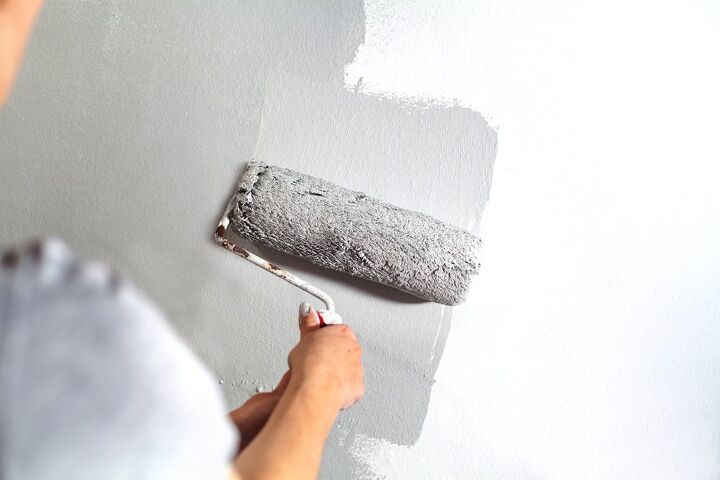



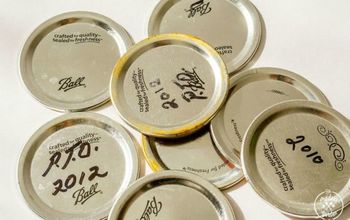
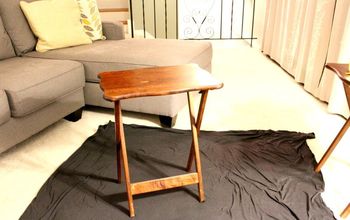




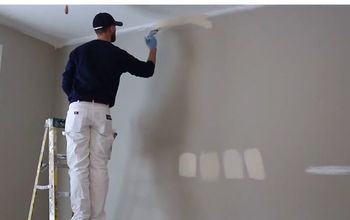


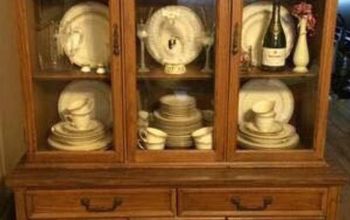
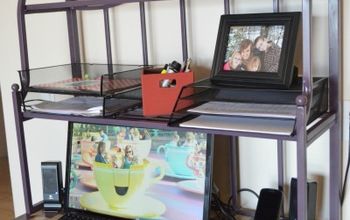
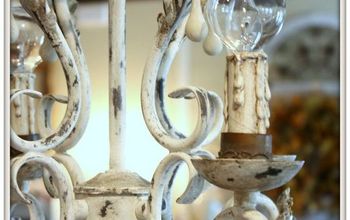
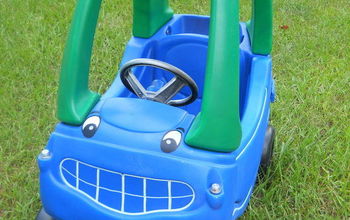
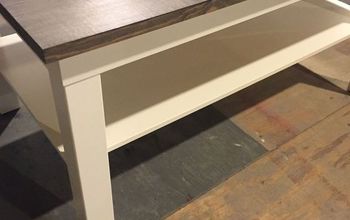


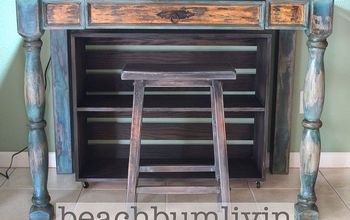
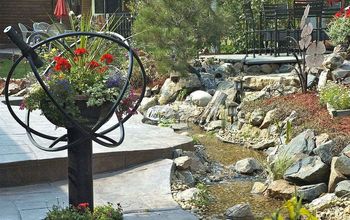
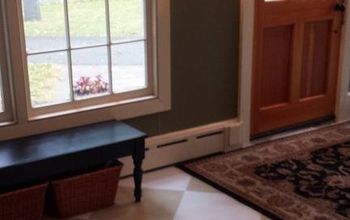
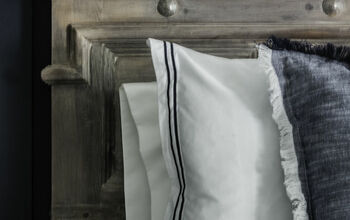
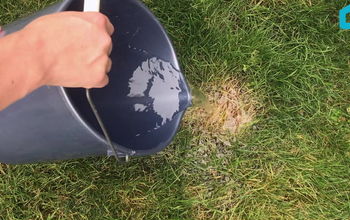

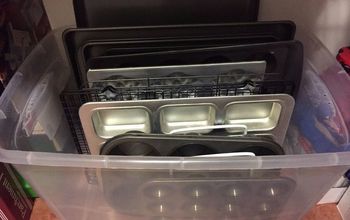
Frequently asked questions
Have a question about this project?